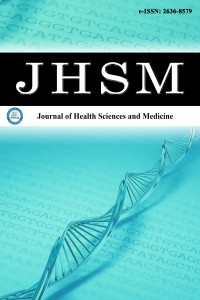1.
Safarinejad MR. Urinary mineral excretion in healthy Iranianchildren. Pediatr Nephrol. 2003;18(2):140-144. doi:10.1007/s00467-002-1020-1
2.
Simsek B, Islek I. Urinary excretions of calcium, magnesium,phospahate, uric acid in 2-16 years old healthy Turkish childrenHaydarpaşa Numune Med J. 2017;57(1):42-47.
3.
Poyrazoğlu HM, Düşünsel R, Yazici C, et al. Urinary uricacid: creatinine ratios in healthy Turkish children. Pediatr Int.2009;51(4):526-529. doi:10.1111/j.1442-200X.2008.02785.x
4.
Portale AA. Calcium and phosphorus. In: Barrat TM,Avner ED, Harmon WE. editors. Pediatric nephrology.Pennsylvania:Lippincott Williams&Wilkins,1999:191-213.
5.
El Mallah C, Ghattas H, Shatila D, et al. Urinary magnesium,calcium, and phosphorus to creatinine ratios of healthy elementaryschool Lebanese children. Biol Trace Elem Res. 2016;170(2):264-270. doi:10.1007/s12011-015-0484-3
6.
Al Ghali R, El-Mallah C, Obeid O, El-Saleh O, Smail L, HarounD. Urinary minerals excretion among primary schoolchildren inDubai-United Arab Emirates. PLoS One. 2021;16(8):e0255195.doi:10.1371/journal.pone.0255195
7.
Chen YH, Lee AJ, Chen CH, Chesney RW, Stapleton FB, Roy S.Urinary mineral excretion among normal Taiwanese children.Pediatr Nephrol. 1994;8(1):36-39. doi:10.1007/BF00868256
8.
Kruse K, Kracht U, Kruse U. Reference values for urinarycalcium excretion and screening for hypercalciuria in childrenand adolescents. Eur J Pediatr. 1984;143(1):25-31. doi:10.1007/BF00442743
9.
Moore ES, Coe FL, McMann BJ, Favus MJ. Idiopathic hypercalciuriain children: prevalence and metabolic characteristics. J Pediatr.1978;92(6):906-910. doi:10.1016/s0022-3476(78)80358-8
10.
Rathod A, Bonny O, Guessous I, et al. Association of urinarycalcium excretion with serum calcium and vitamin D levels. Clin JAm Soc Nephrol. 2015;10(3):452-462. doi:10.2215/CJN.12511213
11.
Van Abel M, Hoenderop JG, Dardenne O, et al. 1,25-dihydroxyvitaminD(3)-independent stimulatory effect of estrogen on the expressionof ECaC1 in the kidney. J Am Soc Nephrol. 2002;13(8):2102-2109.doi:10.1097/01.asn.0000022423.34922.2a
12.
Kimira M, Kudo Y, Takachi R, Haba R, Watanabe S. NihonEiseigaku Zasshi. 2004;59(1):23-30. doi:10.1265/jjh.59.23
13.
Kesteloot H, Joossens JV. The relationship between dietaryintake and urinary excretion of sodium, potassium, calcium andmagnesium: Belgian Interuniversity Research on Nutrition andHealth. J Hum Hypertens. 1990;4(5):527-533.
14.
Muldowney FP, Freaney R, Ryan JG. The pathogenesis ofidiopathic hypercalciuria: evidence for renal tubular calcium leak.Q J Med. 1980;49(193):87-94.
15.
Muldowney FP, Freaney R, Moloney MF. Importance ofdietary sodium in the hypercalciuria syndrome. Kidney Int.1982;22(3):292-296. doi:10.1038/ki.1982.168
16.
Hegsted M, Schuette SA, Zemel MB, Linkswiler HM. Urinarycalcium and calcium balance in young men as affected by levelof protein and phosphorus intake. J Nutr. 1981;111(3):553-562.doi:10.1093/jn/111.3.553
17.
Holl MG, Allen LH. Sucrose ingestion, insulin response andmineral metabolism in humans. J Nutr. 1987;117(7):1229-1233.doi:10.1093/jn/117.7.1229
18.
Cirillo M, Ciacci C, Laurénzi M, Mellone M, Mazzacca G, DeSanto NG. Salt intake, urinary sodium, and hypercalciuria. MinerElectrolyte Metab. 1997;23(3-6):265-268.
19.
Simecková A, Zamrazil V, Cerovská J. The effect of age onlevels of magnesium and creatinine in the urine. Cas Lek Cesk.1998;137(24):753-756.
20.
Marwaha RK, Garg MK, Dang N, et al. Reference range ofrandom urinary calcium creatinine ratio in North Indian childrenand adolescents. Ann Pediatr Endocrinol Metab. 2019;24(1):34-40.doi:10.6065/apem.2019.24.1.34
21.
Van den Bussche K, Herrmann D, De Henauw S, et al. Urinarymineral concentrations in European pre-adolescent children andtheir association with calcaneal bone quantitative ultrasoundmeasurements. Int J Environ Res Public Health. 2016;13(5):471.doi:10.3390/ijerph13050471
22.
Liu Z, Ding X, Wu J, et al. Dose-response relationship between higherserum calcium level and higher prevalence of hyperuricemia: across-sectional study. Medicine. 2019;98(20):e15611. doi:10.1097/MD.0000000000015611

